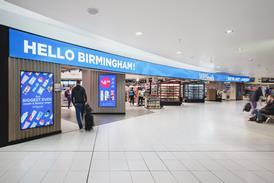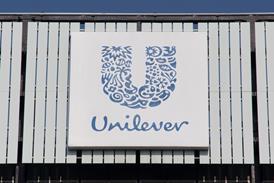The global discounters are driving structural changes in the market, argues IGD, yet many suppliers have much work to do before they can respond effectively. Elaine Watson reports
Prices will be moving in only one direction in 2004: down. Tesco and Wal-Mart might have ploughed on relatively unopposed in 2003, but other established international retailers will remember the year for the poor economic climate, adverse currency movements, the growth of discount formats and persistent deflation.
That’s the verdict of IGD’s Global Retailing 2004, which makes pretty depressing reading for some. It states: “The current deflationary trend, whereby price declines are steeper and more prolonged, is being driven by factors that reflect structural shifts in the industry and are therefore likely to have a permanent impact on lowering retail prices.”
Global trade liberalisation is opening up new, cheaper, sources of production and international retailers are increasingly sourcing direct and cutting out the middlemen, says IGD.
In this climate, EDLP operators like Wal-Mart and discounters like Lidl are driving the global retail agenda now and forcing mainstream operators to play them at their own game, says IGD.
Despite Wal-Mart’s colossal size, the smaller discounters remain extremely competitive on price, because they stock such a limited number of lines, the report asserts. Indeed, Wal-Mart’s sales value per SKU is actually substantially less than Aldi’s in the US, which makes $3.2bn from 700 products ($4.6m per SKU) against Wal-Mart’s $89bn from 120,000 products (just $0.7m per
SKU). The number of discount stores has doubled in Europe over the last decade, and the number of US dollar stores (discounters with a limited number of price points) has rocketed in the last year with each leading player achieving double-digit sales growth.
Regulatory restrictions on larger store openings have also worked to the advantage of the discounters, especially in France, where planning restrictions are such that discount stores account for nearly 80% of all store openings and extensions, says IGD.
“Discounters are driving a structural change in the market as they broaden their product ranges, improve their quality and offer a more convenient shopping location than large-scale hypermarkets. As a result, they are gaining consumer acceptance and building their market share.”
In the past year, for example, Aldi and Lidl have added fresh meat and produce to their ranges, improved the quality of their own label and added ready meals and healthy eating lines. Opening hours have increased and some stores now take credit cards.
Good locations in the suburbs and high streets mean discounters are particularly well placed to capitalise on the growing appetite for convenience, adds the report.
They also tend to perform better in markets where labour costs are high - as their cost advantage through using minimal labour is magnified, making moves into mature markets more explicable.
So what does all this mean for suppliers? On the one hand, the big brands might seem better placed than own label counterparts to respond to discounters and the related deflationary challenge because they have more bargaining power, says IGD.
On the other hand, in notoriously price sensitive markets like Germany, where discounters account for 30% of sales, the market share of the leading brands has been relatively static over the last four years, while tertiary brands have been squeezed out of the market.
Indeed, in 2003, growth rates for own label outpaced those of branded manufacturers in nearly two thirds of countries studied in the report, and all the major branded
suppliers are now targeting resources on a clutch of core brands.
The growth of the discounters is not necessarily bad news for suppliers because they are known for straightforward trading relationships and prompt payment.
Nevertheless, many suppliers remain ill-equipped to deal with major international retailers, claims IGD. “Most suppliers have simply not made the structural or technical changes required.”
National sales managers at top global suppliers often meet just two or three times a year, while companies’ cultures and systems are frequently so decentralised that meaningful comparisons between the performance of different operating divisions in different markets are well nigh impossible, it observes.
Moreover, many suppliers have also failed to establish a consistent approach to pricing in international negotiations, which has in turn fuelled grey market trade and strained relationships. Few have a global catalogue of pricing and trade terms, which has also left them in a vulnerable position, especially when Tesco or Wal-Mart ask difficult questions about pricing discrepancies between markets, adds IGD.
However, things are beginning to change, and a growing number of suppliers plan to set up pan-European or regional account teams to deal more effectively with retailers trading with them in several markets. Many are also attempting to harmonise processes such as overriders, listing fees, credit arrangements and cash discounts across trading regions so that they have the internal visibility to improve their negotiating stance.
Interestingly, while sourcing for own label contracts is frequently done on a regional or even global basis, the major retailers have struck surprisingly few international agreements with the big brands. And Carrefour and Metro were names that most frequently cropped up, not Tesco or Wal-Mart, although this is expected to change.
There is little doubt that international grocery retailing is increasingly dominated by a clutch of major players who will continue to challenge their supplier base, says IGD. But suppliers that can build more effective relationships with them also have an enormous amount to gain.
Prices will be moving in only one direction in 2004: down. Tesco and Wal-Mart might have ploughed on relatively unopposed in 2003, but other established international retailers will remember the year for the poor economic climate, adverse currency movements, the growth of discount formats and persistent deflation.
That’s the verdict of IGD’s Global Retailing 2004, which makes pretty depressing reading for some. It states: “The current deflationary trend, whereby price declines are steeper and more prolonged, is being driven by factors that reflect structural shifts in the industry and are therefore likely to have a permanent impact on lowering retail prices.”
Global trade liberalisation is opening up new, cheaper, sources of production and international retailers are increasingly sourcing direct and cutting out the middlemen, says IGD.
In this climate, EDLP operators like Wal-Mart and discounters like Lidl are driving the global retail agenda now and forcing mainstream operators to play them at their own game, says IGD.
Despite Wal-Mart’s colossal size, the smaller discounters remain extremely competitive on price, because they stock such a limited number of lines, the report asserts. Indeed, Wal-Mart’s sales value per SKU is actually substantially less than Aldi’s in the US, which makes $3.2bn from 700 products ($4.6m per SKU) against Wal-Mart’s $89bn from 120,000 products (just $0.7m per
SKU). The number of discount stores has doubled in Europe over the last decade, and the number of US dollar stores (discounters with a limited number of price points) has rocketed in the last year with each leading player achieving double-digit sales growth.
Regulatory restrictions on larger store openings have also worked to the advantage of the discounters, especially in France, where planning restrictions are such that discount stores account for nearly 80% of all store openings and extensions, says IGD.
“Discounters are driving a structural change in the market as they broaden their product ranges, improve their quality and offer a more convenient shopping location than large-scale hypermarkets. As a result, they are gaining consumer acceptance and building their market share.”
In the past year, for example, Aldi and Lidl have added fresh meat and produce to their ranges, improved the quality of their own label and added ready meals and healthy eating lines. Opening hours have increased and some stores now take credit cards.
Good locations in the suburbs and high streets mean discounters are particularly well placed to capitalise on the growing appetite for convenience, adds the report.
They also tend to perform better in markets where labour costs are high - as their cost advantage through using minimal labour is magnified, making moves into mature markets more explicable.
So what does all this mean for suppliers? On the one hand, the big brands might seem better placed than own label counterparts to respond to discounters and the related deflationary challenge because they have more bargaining power, says IGD.
On the other hand, in notoriously price sensitive markets like Germany, where discounters account for 30% of sales, the market share of the leading brands has been relatively static over the last four years, while tertiary brands have been squeezed out of the market.
Indeed, in 2003, growth rates for own label outpaced those of branded manufacturers in nearly two thirds of countries studied in the report, and all the major branded
suppliers are now targeting resources on a clutch of core brands.
The growth of the discounters is not necessarily bad news for suppliers because they are known for straightforward trading relationships and prompt payment.
Nevertheless, many suppliers remain ill-equipped to deal with major international retailers, claims IGD. “Most suppliers have simply not made the structural or technical changes required.”
National sales managers at top global suppliers often meet just two or three times a year, while companies’ cultures and systems are frequently so decentralised that meaningful comparisons between the performance of different operating divisions in different markets are well nigh impossible, it observes.
Moreover, many suppliers have also failed to establish a consistent approach to pricing in international negotiations, which has in turn fuelled grey market trade and strained relationships. Few have a global catalogue of pricing and trade terms, which has also left them in a vulnerable position, especially when Tesco or Wal-Mart ask difficult questions about pricing discrepancies between markets, adds IGD.
However, things are beginning to change, and a growing number of suppliers plan to set up pan-European or regional account teams to deal more effectively with retailers trading with them in several markets. Many are also attempting to harmonise processes such as overriders, listing fees, credit arrangements and cash discounts across trading regions so that they have the internal visibility to improve their negotiating stance.
Interestingly, while sourcing for own label contracts is frequently done on a regional or even global basis, the major retailers have struck surprisingly few international agreements with the big brands. And Carrefour and Metro were names that most frequently cropped up, not Tesco or Wal-Mart, although this is expected to change.
There is little doubt that international grocery retailing is increasingly dominated by a clutch of major players who will continue to challenge their supplier base, says IGD. But suppliers that can build more effective relationships with them also have an enormous amount to gain.













No comments yet